Contents
- I. Introduction
- II. Understanding Dairy-Free Pizzas
- III. Cheese Alternatives for Dairy-Free Pizzas
- IV. Toppings for Dairy-Free Pizzas
- V. Best Dairy-Free Pizza Recipes
- VI. Tips for Making Dairy-Free Pizzas at Home
- VII. Health Considerations for Dairy-Free Pizzas
- VIII. Dairy-Free Pizza Brands and Products
- IX. Frequently Asked Questions (FAQs)
- A. Can dairy-free cheese melt like regular cheese?
- B. Are dairy-free pizzas suitable for vegans?
- C. How do I store dairy-free cheese?
- D. Can I freeze dairy-free pizzas?
- E. Are there gluten-free options for dairy-free pizzas?
- F. Can I use dairy-free cheese for other dishes?
- G. Are dairy-free pizzas healthier than traditional pizzas?
- H. How do I prevent dairy-free cheese from sticking to the pan?
- I. Can I make my own dairy-free cheese at home?
- J. Are there any dairy-free pizza options at restaurants?
I. Introduction
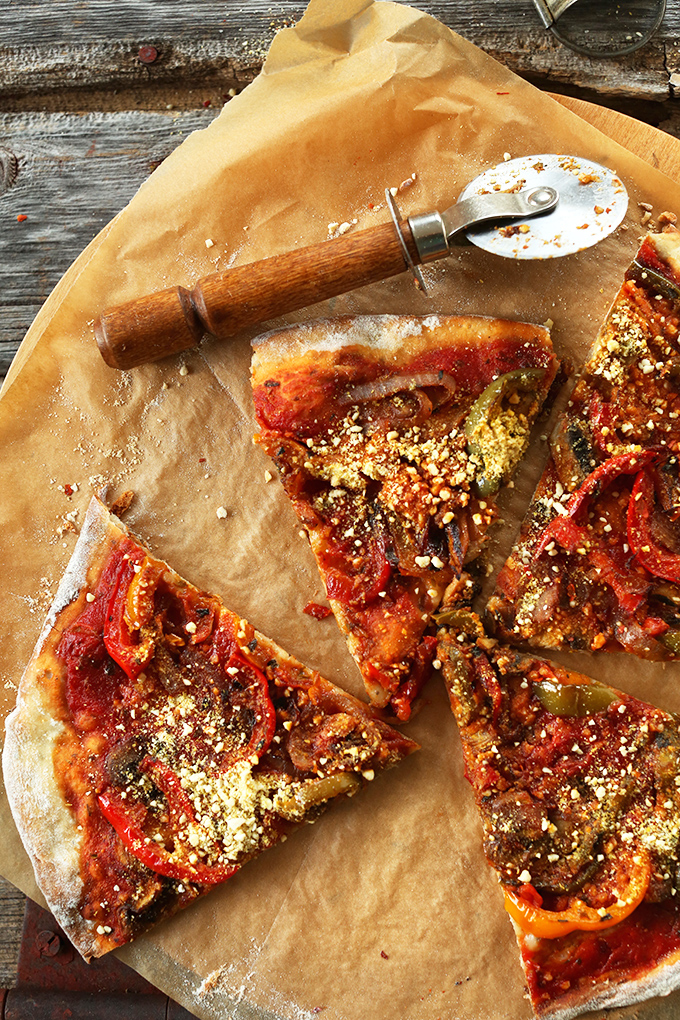
Welcome to the world of dairy-free pizzas! Whether you’re lactose intolerant, following a vegan diet, or simply looking to explore new flavors, this article will guide you through the realm of cheese alternatives and toppings for your pizza creations. Say goodbye to traditional mozzarella and hello to a variety of plant-based options that are just as delicious and satisfying.
In this article, we will delve into the world of dairy-free cheeses and explore the best alternatives for your pizza. We’ll also discuss a range of mouthwatering toppings that will elevate your pizza game to a whole new level. From classic combinations to unique and adventurous flavors, there’s something for everyone.
But why choose dairy-free pizzas? Apart from catering to dietary restrictions, dairy-free pizzas offer a plethora of benefits. They are often lower in saturated fat, cholesterol, and calories compared to their dairy counterparts. Additionally, they provide an opportunity to experiment with different flavors and textures, making your pizza experience even more exciting.
Throughout this article, we’ll provide you with all the information you need to navigate the world of dairy-free pizzas. From understanding the various cheese alternatives available to exploring a wide range of delicious toppings, you’ll be equipped with the knowledge to create mouthwatering pizzas that are both dairy-free and full of flavor.
II. Understanding Dairy-Free Pizzas
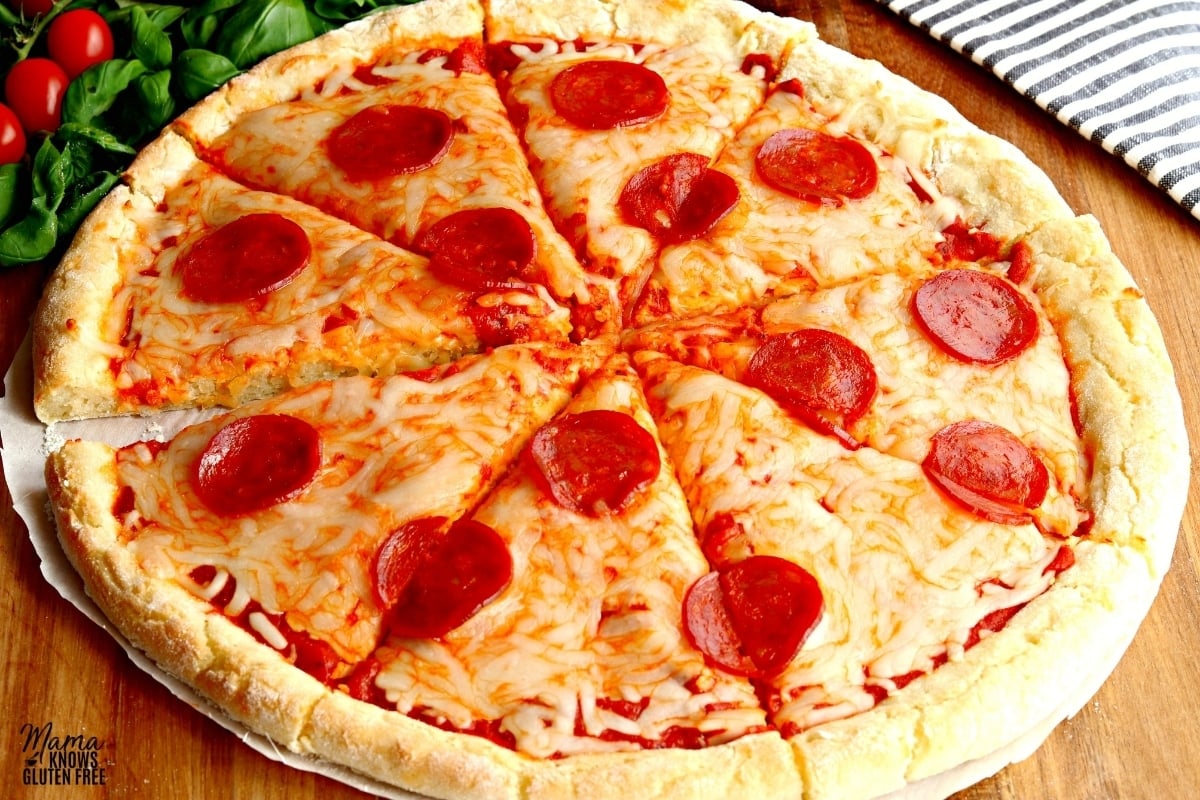
When it comes to dietary restrictions, finding suitable alternatives to favorite foods can be a challenge. For those who are lactose intolerant or follow a dairy-free diet, traditional pizzas can be off-limits due to the presence of cheese. However, the rise in popularity of dairy-free pizzas has provided a delicious solution for pizza lovers who cannot consume dairy products.
A. What are dairy-free pizzas?
Dairy-free pizzas are pizzas that are made without any dairy ingredients. This means that they do not contain cheese, milk, butter, or any other dairy-based products. Instead, dairy-free pizzas use alternative ingredients to create a similar taste and texture to traditional pizzas.
One of the key components of dairy-free pizzas is the cheese substitute. There are several options available, including plant-based cheeses made from ingredients like nuts, soy, or tapioca. These cheeses are designed to melt and stretch like traditional cheese, providing a satisfying pizza experience without the dairy.
In addition to the cheese substitute, dairy-free pizzas also use alternative crusts and toppings. The crusts can be made from a variety of ingredients such as cauliflower, gluten-free flours, or even sweet potatoes. Toppings can include a wide range of vegetables, meats, and plant-based proteins, allowing for endless customization and flavor combinations.
B. Benefits of dairy-free pizzas
There are several benefits to choosing dairy-free pizzas, even if you do not have a specific dietary restriction. Here are some of the key advantages:
- 1. Lactose intolerance-friendly: Dairy-free pizzas are a great option for individuals who are lactose intolerant. By eliminating dairy from the equation, these pizzas can be enjoyed without any digestive discomfort.
- 2. Vegan-friendly: Dairy-free pizzas are inherently vegan since they do not contain any animal products. This makes them a suitable choice for individuals following a vegan lifestyle.
- 3. Healthier alternative: Dairy-free pizzas often use healthier ingredients compared to traditional pizzas. For example, cauliflower crusts provide a lower-carb option, and plant-based cheeses can be lower in saturated fat.
- 4. Allergy-friendly: Dairy is a common allergen, and dairy-free pizzas offer a safe and delicious option for individuals with dairy allergies or sensitivities.
- 5. Environmental impact: Choosing dairy-free pizzas can have a positive impact on the environment. Dairy production is resource-intensive, and opting for plant-based alternatives reduces the carbon footprint.
III. Cheese Alternatives for Dairy-Free Pizzas
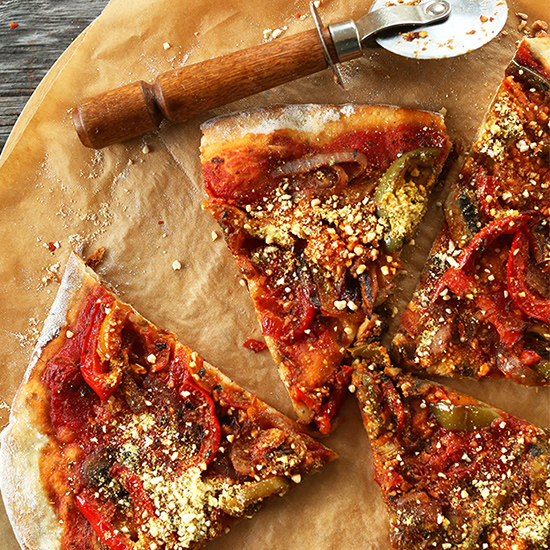
When it comes to enjoying a delicious dairy-free pizza, finding the right cheese alternative is key. Fortunately, there are several plant-based options and vegan cheese brands available that can satisfy your cheesy cravings. In this section, we will explore some of the best cheese alternatives for dairy-free pizzas.
A. Plant-based cheese options
1. Almond-based cheese:
Almond-based cheese is a popular choice for those following a dairy-free diet. Made from blanched almonds, this cheese alternative offers a creamy texture and a mild, nutty flavor. It melts well and can be used as a topping or a filling for your dairy-free pizza.
2. Soy-based cheese:
Soy-based cheese is another great option for dairy-free pizzas. Made from soy milk, this cheese alternative has a smooth and creamy texture. It can be found in various flavors, such as mozzarella, cheddar, and pepper jack. Soy-based cheese melts nicely and adds a delicious cheesy taste to your pizza.
3. Coconut-based cheese:
Coconut-based cheese is a unique and flavorful option for dairy-free pizzas. Made from coconut milk, this cheese alternative has a rich and creamy texture. It offers a slightly sweet and tropical taste, which can complement a variety of pizza toppings. Coconut-based cheese melts well and adds a delightful twist to your dairy-free pizza.
B. Nutritional yeast as a cheese substitute
If you’re looking for a cheese substitute that is not made from nuts or soy, nutritional yeast is an excellent choice. Nutritional yeast is a deactivated yeast that is commonly used as a cheese replacement in vegan and dairy-free recipes. It has a cheesy and nutty flavor, making it a perfect addition to your dairy-free pizza. Sprinkle some nutritional yeast on top of your pizza before baking to enhance the cheesy taste.
C. Vegan cheese brands for dairy-free pizzas
1. Daiya:
Daiya is a well-known vegan cheese brand that offers a wide range of dairy-free cheese alternatives. Their products are made from plant-based ingredients and are free from dairy, gluten, and soy. Daiya cheese melts and stretches like traditional cheese, making it a popular choice for dairy-free pizzas. They offer various flavors, including mozzarella, cheddar, and pepper jack.
2. Violife:
Violife is another top vegan cheese brand that produces high-quality dairy-free cheese alternatives. Their products are made from a blend of plant-based ingredients and are free from dairy, gluten, and soy. Violife cheese has a creamy and smooth texture, and it melts beautifully on top of your dairy-free pizza. They offer a variety of flavors, such as mozzarella, cheddar, and feta.
3. Follow Your Heart:
Follow Your Heart is a well-established vegan cheese brand that has been providing delicious dairy-free alternatives for years. Their cheese products are made from plant-based ingredients and are free from dairy, gluten, and soy. Follow Your Heart cheese melts and stretches, making it a perfect choice for dairy-free pizzas. They offer a range of flavors, including mozzarella, cheddar, and provolone.
When choosing a vegan cheese brand for your dairy-free pizza, it’s important to consider your personal taste preferences and dietary restrictions. Experiment with different brands and flavors to find the one that suits your palate. Whether you opt for almond-based cheese, soy-based cheese, coconut-based cheese, or nutritional yeast, there are plenty of options available to create a delicious and cheesy dairy-free pizza.
IV. Toppings for Dairy-Free Pizzas
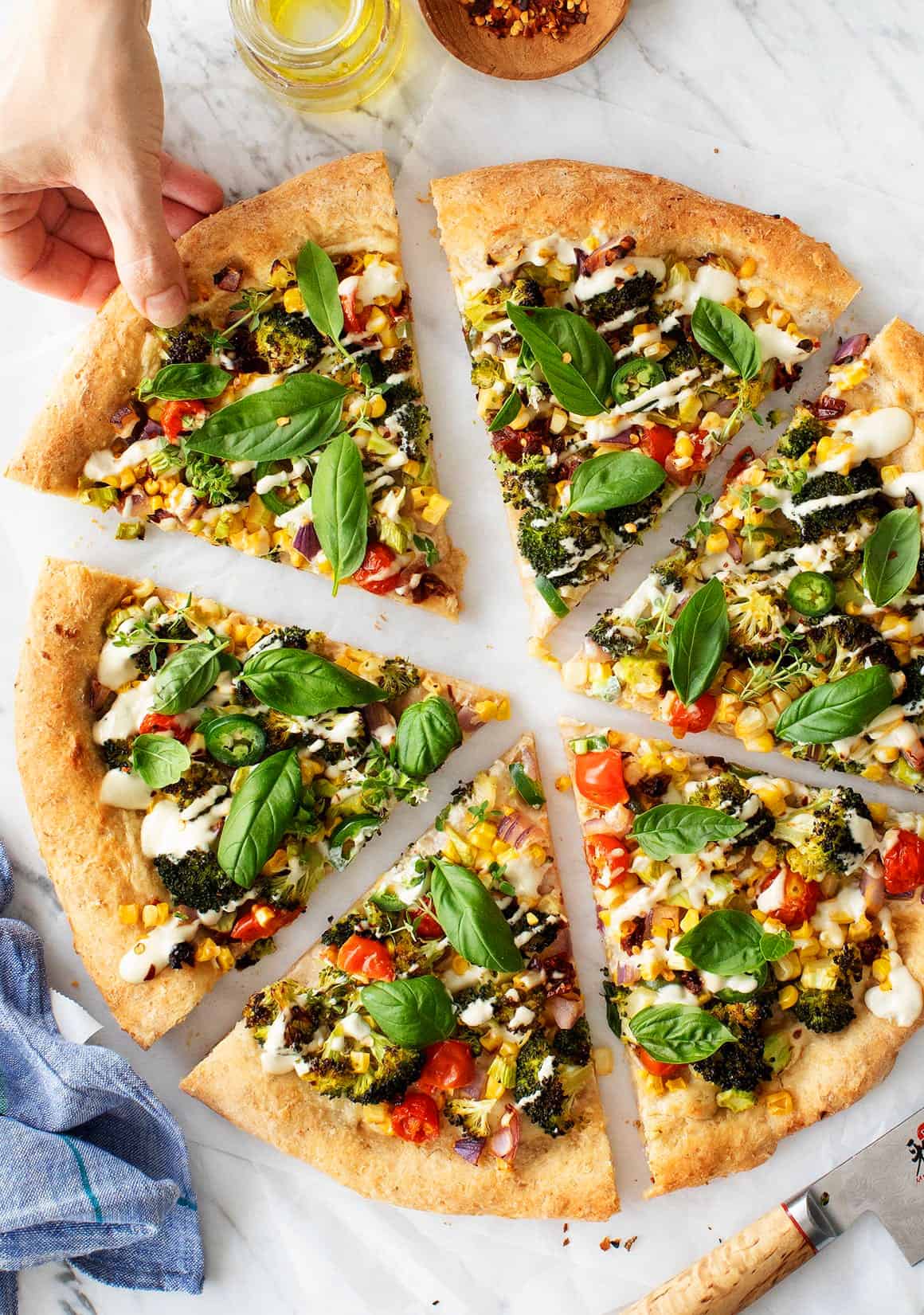
When it comes to dairy-free pizzas, the toppings you choose can make all the difference in terms of flavor and texture. Whether you’re following a vegan diet or have lactose intolerance, there are plenty of delicious options to explore. In this section, we’ll dive into some mouthwatering vegetable, protein, and flavorful toppings that will take your dairy-free pizza to the next level.
A. Vegetable Toppings
Vegetables not only add vibrant colors to your pizza but also provide essential nutrients. Here are three vegetable toppings that are perfect for dairy-free pizzas:
- Mushrooms: These earthy delights are a popular choice for pizza toppings. They have a meaty texture and a rich umami flavor that pairs well with other ingredients. Whether you prefer button mushrooms, cremini mushrooms, or shiitake mushrooms, they will add a savory depth to your pizza.
- Bell Peppers: Bell peppers come in a variety of colors, including red, green, and yellow. They add a sweet and slightly tangy taste to your pizza. The vibrant colors also make your pizza visually appealing. Slice them thinly or chop them into small pieces to distribute the flavors evenly.
- Spinach: If you’re looking to add some leafy greens to your pizza, spinach is an excellent choice. It has a mild flavor that won’t overpower the other toppings. Spinach also provides a good dose of iron, calcium, and vitamins A and C. Spread a handful of fresh spinach leaves over your pizza before baking for a nutritious boost.
B. Protein Toppings
For those who crave a more substantial pizza, protein-rich toppings are the way to go. Here are three options that will satisfy your hunger:
- Plant-Based Meats: With the rise in popularity of plant-based diets, there are now various plant-based meat alternatives available. These meat substitutes are made from ingredients like soy, wheat gluten, or pea protein and mimic the taste and texture of real meat. From vegan pepperoni to plant-based sausage crumbles, these toppings will give your pizza a hearty and satisfying flavor.
- Tofu: Tofu is a versatile ingredient that can be used in many different dishes, including pizza. It has a mild taste that absorbs the flavors of the other toppings. For a pizza topping, you can crumble firm tofu and season it with your favorite herbs and spices. It will add a unique texture and a boost of plant-based protein to your pizza.
- Chickpeas: Chickpeas, also known as garbanzo beans, are a great source of protein and fiber. They have a nutty flavor and a slightly creamy texture. You can use them whole or mash them up to create a spreadable consistency. Season them with spices like cumin, paprika, and garlic powder for a delicious and filling pizza topping.
C. Flavorful Toppings
When it comes to flavor, the sky’s the limit. Here are three flavorful toppings that will add a burst of taste to your dairy-free pizza:
- Olives: Olives come in various types, such as black olives, green olives, and Kalamata olives. They are packed with flavor and add a salty and briny taste to your pizza. Whether you prefer them whole or sliced, they will elevate the overall taste profile of your pizza.
- Sun-Dried Tomatoes: Sun-dried tomatoes are intensely flavored and slightly chewy. They provide a concentrated burst of sweetness and tanginess to your pizza. You can use them as is or rehydrate them in warm water before adding them to your pizza. Their robust flavor will make your dairy-free pizza shine.
- Fresh Herbs: Fresh herbs like basil, oregano, and thyme are aromatic and add a pop of freshness to your pizza. They not only enhance the flavors but also make your pizza visually appealing. Sprinkle them over your pizza after it comes out of the oven to preserve their vibrant colors and delicate flavors.
Now that you have a variety of dairy-free toppings to choose from, it’s time to get creative in the kitchen. Experiment with different combinations and quantities to find your perfect dairy-free pizza. Whether you’re a vegan, lactose intolerant, or simply looking to try something new, these toppings will ensure that your pizza is bursting with flavor and satisfaction.
V. Best Dairy-Free Pizza Recipes
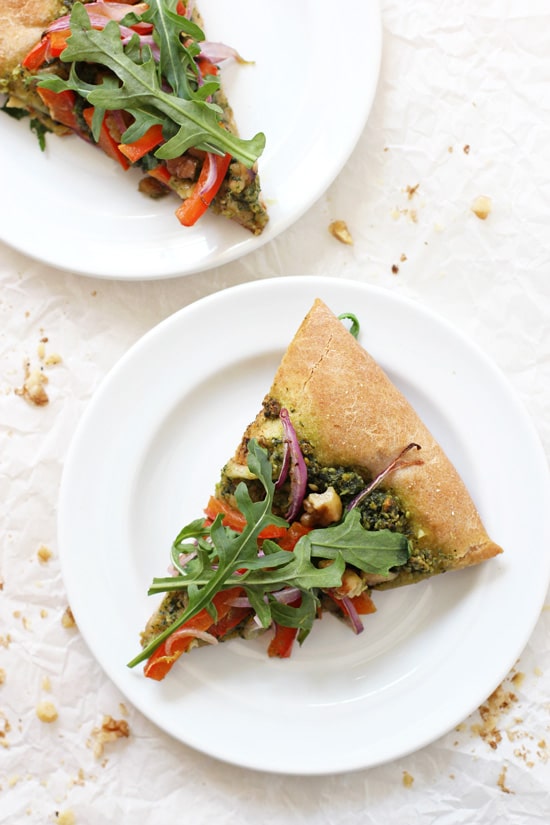
When it comes to dairy-free pizzas, there are plenty of delicious options to choose from. Whether you’re lactose intolerant, following a vegan diet, or simply looking to try something new, these dairy-free pizza recipes are sure to satisfy your cravings. In this section, we’ll explore three mouthwatering recipes that use alternative cheeses made from almonds, soy, and coconuts.
A. Margherita Pizza with Almond-Based Cheese
If you’re a fan of the classic Margherita pizza, you’ll love this dairy-free version made with almond-based cheese. The creamy texture and nutty flavor of the cheese perfectly complement the fresh tomatoes and fragrant basil. Here’s how to make it:
- Preheat your oven to 450°F (230°C) and place a pizza stone or baking sheet inside to heat up.
- Roll out your pizza dough into a round shape and transfer it to a piece of parchment paper.
- Spoon a generous amount of tomato sauce onto the dough, leaving a small border around the edges.
- Top the sauce with slices of dairy-free almond cheese, ensuring that it’s evenly distributed.
- Place the pizza, along with the parchment paper, onto the preheated pizza stone or baking sheet.
- Bake for about 12-15 minutes, or until the crust is golden brown and the cheese has melted.
- Remove from the oven and garnish with fresh basil leaves.
- Slice and serve hot.
This almond-based Margherita pizza is a crowd-pleaser and a great option for those who are looking for a dairy-free alternative without compromising on taste.
B. BBQ Jackfruit Pizza with Soy-Based Cheese
If you’re craving a unique and flavorful pizza, look no further than this BBQ jackfruit pizza with soy-based cheese. Jackfruit is a versatile fruit that can mimic the texture of pulled pork when cooked, making it an excellent plant-based alternative. Here’s how to make this delicious pizza:
- Preheat your oven to 450°F (230°C) and place a pizza stone or baking sheet inside to heat up.
- Drain and rinse a can of young jackfruit, then shred it using a fork.
- In a pan, sauté the shredded jackfruit with your favorite BBQ sauce until it’s well-coated and heated through.
- Roll out your pizza dough into a round shape and transfer it to a piece of parchment paper.
- Spread a layer of dairy-free soy-based cheese on the dough, leaving a small border around the edges.
- Top the cheese with the BBQ jackfruit, spreading it evenly across the pizza.
- Place the pizza, along with the parchment paper, onto the preheated pizza stone or baking sheet.
- Bake for about 12-15 minutes, or until the crust is golden brown and the cheese has melted.
- Remove from the oven and let it cool slightly before slicing and serving.
This BBQ jackfruit pizza is a delicious and satisfying option for those who enjoy bold flavors and want to explore dairy-free alternatives.
C. Mediterranean Pizza with Coconut-Based Cheese
If you’re a fan of Mediterranean flavors, this dairy-free pizza with coconut-based cheese is a must-try. The combination of tangy olives, juicy tomatoes, and fragrant herbs creates a burst of flavors that will transport you to the sunny shores of the Mediterranean. Here’s how to make it:
- Preheat your oven to 450°F (230°C) and place a pizza stone or baking sheet inside to heat up.
- Roll out your pizza dough into a round shape and transfer it to a piece of parchment paper.
- Spread a layer of dairy-free coconut-based cheese on the dough, leaving a small border around the edges.
- Top the cheese with sliced tomatoes, olives, and your choice of Mediterranean herbs, such as basil, oregano, and thyme.
- Place the pizza, along with the parchment paper, onto the preheated pizza stone or baking sheet.
- Bake for about 12-15 minutes, or until the crust is golden brown and the cheese has melted.
- Remove from the oven and let it cool slightly before slicing and serving.
This Mediterranean pizza is a refreshing and flavorful option that showcases the versatility of coconut-based cheese.
These dairy-free pizza recipes prove that you don’t need traditional cheese to enjoy a delicious and satisfying pizza. Whether you choose almond-based, soy-based, or coconut-based cheese, these recipes offer a range of flavors and textures that will please your taste buds. So, why not give them a try and discover the world of dairy-free pizzas?
VI. Tips for Making Dairy-Free Pizzas at Home
Are you lactose intolerant or following a dairy-free diet? Don’t worry, you can still enjoy delicious pizzas without the cheese. In this section, I will share some tips and techniques for making dairy-free pizzas at home. From choosing the right crust to preparing the cheese alternative and mastering the baking techniques, you’ll be able to create mouthwatering pizzas that are free from dairy but full of flavor.
A. Choosing the Right Crust
The crust is the foundation of any pizza, and it plays a crucial role in the overall taste and texture. When making dairy-free pizzas, it’s important to choose a crust that complements the other ingredients and provides a satisfying bite. Here are some options to consider:
- Gluten-Free Crust: If you’re avoiding both dairy and gluten, opt for a gluten-free crust made from alternative flours like rice flour, almond flour, or tapioca flour. These crusts are not only dairy-free but also suitable for those with gluten sensitivities.
- Cauliflower Crust: For a low-carb and dairy-free option, try a cauliflower crust. Made from grated cauliflower, this crust is packed with nutrients and has a unique flavor. It’s a great choice for those looking to reduce their carb intake or incorporate more vegetables into their diet.
- Whole Wheat Crust: If you prefer a heartier and more nutritious crust, go for a whole wheat crust. This crust is made from whole wheat flour, which adds a nutty flavor and extra fiber to your pizza. It pairs well with a variety of toppings and is a healthier alternative to traditional white flour crusts.
Experiment with different crust options to find the one that suits your taste preferences and dietary needs. Don’t be afraid to get creative and try new flavors and textures.
B. Preparing the Cheese Alternative
One of the biggest challenges when making dairy-free pizzas is finding a suitable cheese alternative. While there are several store-bought dairy-free cheeses available, you can also make your own cheese alternative at home. Here are a few options to consider:
- Nut-Based Cheese: Cashews, almonds, and macadamia nuts can be soaked and blended to create a creamy and flavorful cheese alternative. Add nutritional yeast, lemon juice, and seasonings to enhance the taste. This nut-based cheese is rich in healthy fats and adds a delicious creaminess to your pizza.
- Plant-Based Cheese: Many brands now offer plant-based cheeses made from ingredients like coconut oil, tapioca starch, and pea protein. These cheeses melt and stretch like traditional dairy cheese, making them a great option for pizza toppings. Look for brands that are free from artificial flavors and preservatives.
- Vegan Cheese Sauce: Another option is to make a dairy-free cheese sauce using ingredients like potatoes, carrots, and nutritional yeast. Blend these ingredients together with spices and seasonings to create a smooth and cheesy sauce. Drizzle it over your pizza or use it as a base sauce.
Feel free to experiment with different cheese alternatives and find the one that satisfies your cheesy cravings. You might discover a new favorite that you never thought existed!
C. Baking Techniques for Dairy-Free Pizzas
Once you have chosen the right crust and prepared the cheese alternative, it’s time to master the baking techniques to ensure a perfectly cooked dairy-free pizza. Here are some tips to help you achieve pizza perfection:
- Preheat Your Oven: Preheating your oven is essential for achieving a crispy crust. Make sure to preheat it to the recommended temperature mentioned in your crust recipe.
- Use a Pizza Stone or Baking Steel: For a professional-quality pizza, consider using a pizza stone or baking steel. These tools help distribute heat evenly, resulting in a crispier crust.
- Roll Out the Dough Thinly: To avoid a soggy pizza, roll out the dough thinly. This allows the heat to penetrate the crust and cook it evenly.
- Par-Bake the Crust: If you’re using a homemade crust, consider par-baking it for a few minutes before adding the toppings. This helps prevent the crust from becoming soggy.
- Don’t Overload with Toppings: While it’s tempting to pile on the toppings, be mindful not to overload your pizza. Too many toppings can weigh down the crust and make it soggy.
- Monitor the Cooking Time: Keep a close eye on your pizza while it’s baking. Cooking times may vary depending on the crust and toppings. Aim for a golden-brown crust and bubbly cheese alternative.
By following these baking techniques, you’ll be able to create dairy-free pizzas that are just as delicious as their cheesy counterparts. Don’t be afraid to experiment with different toppings and flavors to customize your pizza to your liking.
Now that you have these tips and techniques in your arsenal, you can confidently make dairy-free pizzas at home. Whether you’re lactose intolerant, following a dairy-free diet, or simply looking to try something new, these tips will help you create flavorful and satisfying pizzas that everyone can enjoy. So, roll up your sleeves, gather your ingredients, and get ready to embark on a delicious dairy-free pizza-making adventure!
VII. Health Considerations for Dairy-Free Pizzas
When it comes to enjoying a delicious pizza, those with dietary restrictions or allergies often have to miss out on the cheesy goodness. However, with the rise in popularity of dairy-free alternatives, there are now plenty of options available for dairy-free pizzas. In this section, we will explore the nutritional value of dairy-free pizzas, allergen considerations, and alternatives for calcium and vitamin D.
A. Nutritional value of dairy-free pizzas
Many people wonder if dairy-free pizzas can provide the same nutritional value as traditional pizzas. The good news is that dairy-free pizzas can be just as nutritious, if not more so, depending on the ingredients used. While traditional pizzas rely heavily on cheese for flavor and texture, dairy-free pizzas often use alternative ingredients that are packed with nutrients.
For example, instead of dairy cheese, dairy-free pizzas may use plant-based cheeses made from ingredients like nuts, soy, or tapioca. These plant-based cheeses can offer a good source of healthy fats, protein, and vitamins. Additionally, dairy-free pizzas often feature an array of colorful vegetables as toppings, providing essential vitamins, minerals, and fiber.
It’s important to note that the nutritional value of dairy-free pizzas can vary depending on the specific ingredients used. When choosing a dairy-free pizza, be sure to read the labels and opt for options that are low in saturated fats and sodium. Additionally, consider the overall balance of the pizza by including a variety of vegetables and lean protein sources.
B. Allergen considerations
One of the main reasons people opt for dairy-free pizzas is due to lactose intolerance or dairy allergies. Dairy products contain lactose, a sugar that can be difficult for some individuals to digest. By choosing dairy-free pizzas, those with lactose intolerance can enjoy a delicious meal without the discomfort.
Furthermore, dairy allergies can range from mild to severe, with some individuals experiencing life-threatening reactions. Dairy-free pizzas provide a safe and enjoyable option for those with dairy allergies, allowing them to indulge in a pizza without the risk of an allergic reaction.
However, it’s important to note that while dairy-free pizzas may not contain dairy ingredients, they may still be produced in facilities that handle dairy products. Cross-contamination can occur, leading to trace amounts of dairy in the final product. If you have a severe dairy allergy, it’s crucial to check with the manufacturer or restaurant to ensure there is no risk of cross-contamination.
C. Calcium and vitamin D alternatives
Dairy products are known for their high calcium and vitamin D content, which are essential for maintaining strong bones and overall health. When following a dairy-free diet, it’s important to find alternative sources of these nutrients to ensure adequate intake.
Fortunately, there are various dairy-free alternatives that can provide calcium and vitamin D. Some plant-based milk alternatives, such as almond milk or soy milk, are fortified with these nutrients. Additionally, certain leafy green vegetables like kale and broccoli are excellent sources of calcium. For vitamin D, spending time outdoors in the sunlight can help your body naturally produce this essential vitamin.
If you’re concerned about meeting your calcium and vitamin D needs, it may be beneficial to consult with a registered dietitian or nutritionist. They can provide personalized recommendations based on your dietary preferences and needs.
VIII. Dairy-Free Pizza Brands and Products
When it comes to dairy-free pizza options, there are several brands and products available in the market that cater to individuals with lactose intolerance or those who follow a dairy-free diet. These brands offer a variety of cheese alternatives and toppings that can satisfy your pizza cravings without compromising on taste or texture. In this section, we will explore some of the top dairy-free pizza brands and products that you can try.
1. Daiya Foods
Daiya Foods is a well-known brand that specializes in dairy-free and vegan products. They offer a range of dairy-free cheese alternatives, including mozzarella-style shreds, cheddar-style slices, and cream cheese-style spreads. These products are made from plant-based ingredients and are free from lactose, casein, and gluten. Daiya Foods also offers pre-made dairy-free pizzas that come with a variety of toppings, such as vegetables, plant-based meats, and herbs.
2. Follow Your Heart
Follow Your Heart is another popular brand that offers dairy-free cheese alternatives and pizza products. Their dairy-free cheese shreds are made from a blend of plant-based ingredients, including coconut oil and potato starch. Follow Your Heart also offers pre-made dairy-free pizzas that are topped with a variety of vegetables, plant-based meats, and dairy-free cheese. Their pizzas are known for their delicious taste and gooey texture.
3. Violife
Violife is a brand that specializes in vegan and dairy-free cheese alternatives. They offer a wide range of dairy-free cheese blocks, slices, and shreds that are made from a blend of plant-based ingredients, including coconut oil and starches. Violife’s dairy-free cheese alternatives are known for their meltability and cheesy flavor, making them a great choice for dairy-free pizzas. You can use their cheese alternatives as a topping or melt them on your pizza crust for a deliciously cheesy experience.
4. Kite Hill
Kite Hill is a brand that focuses on artisanal dairy-free products, including cheese alternatives. They offer a variety of dairy-free cheese spreads, ricotta-style cheese, and cream cheese-style spreads that are made from almond milk. Kite Hill’s dairy-free cheese alternatives are known for their creamy texture and rich flavor, making them a great addition to dairy-free pizzas. You can spread their cheese alternatives on your pizza crust or use them as a topping for a creamy and indulgent pizza experience.
5. Amy’s Kitchen
Amy’s Kitchen is a brand that specializes in organic and natural frozen meals, including dairy-free pizzas. They offer a range of pre-made dairy-free pizzas that are made with organic ingredients and topped with a variety of vegetables, plant-based meats, and dairy-free cheese. Amy’s Kitchen’s dairy-free pizzas are known for their flavorful taste and crispy crust, making them a convenient and delicious option for dairy-free pizza lovers.
These are just a few examples of the dairy-free pizza brands and products available in the market. Each brand offers its own unique range of cheese alternatives and toppings, allowing you to customize your dairy-free pizza according to your preferences. Whether you’re lactose intolerant, following a dairy-free diet, or simply looking to try something new, these dairy-free pizza options are sure to satisfy your cravings and provide a delicious and satisfying pizza experience.
IX. Frequently Asked Questions (FAQs)
A. Can dairy-free cheese melt like regular cheese?
Yes, dairy-free cheese can melt just like regular cheese. Many dairy-free cheese alternatives are made from plant-based ingredients such as nuts, seeds, or soy, which can be heated to create a creamy and melty texture. However, it’s important to note that different brands and types of dairy-free cheese may have varying melting properties. Some dairy-free cheeses may melt more smoothly and evenly than others, so it’s worth experimenting with different brands to find one that suits your melting needs.
B. Are dairy-free pizzas suitable for vegans?
Yes, dairy-free pizzas are suitable for vegans. Traditional pizzas typically contain cheese made from animal milk, which is not suitable for those following a vegan diet. However, dairy-free pizzas use cheese alternatives that are made from plant-based ingredients, making them a great option for vegans. These cheese alternatives can provide a similar taste and texture to traditional cheese, allowing vegans to enjoy a delicious pizza without compromising their dietary choices.
C. How do I store dairy-free cheese?
The storage instructions for dairy-free cheese may vary depending on the brand and type of cheese. In general, it’s best to follow the packaging instructions provided by the manufacturer. However, here are some general guidelines for storing dairy-free cheese:
- Check the expiration date and consume the cheese before it expires.
- Keep the cheese refrigerated at all times to maintain its freshness and prevent spoilage.
- If the cheese is in a resealable package, make sure to seal it tightly after each use to prevent air exposure.
- If the cheese has been opened but not fully consumed, store it in an airtight container or wrap it tightly in plastic wrap to prevent it from drying out.
D. Can I freeze dairy-free pizzas?
Yes, you can freeze dairy-free pizzas for later consumption. Freezing dairy-free pizzas can help extend their shelf life and allow you to enjoy them at a later time. Here are some tips for freezing dairy-free pizzas:
- Make sure the pizza is fully cooled before freezing it.
- Wrap the pizza tightly in plastic wrap or aluminum foil to prevent freezer burn and maintain its quality.
- Place the wrapped pizza in a freezer-safe bag or container to further protect it from freezer odors.
- Label the package with the date of freezing to keep track of its freshness.
- When you’re ready to eat the frozen pizza, thaw it in the refrigerator overnight before reheating it.
E. Are there gluten-free options for dairy-free pizzas?
Yes, there are gluten-free options available for dairy-free pizzas. Many brands offer gluten-free crusts or pizza bases that are made from alternative flours such as rice flour, almond flour, or tapioca flour. These gluten-free crusts can be topped with dairy-free cheese and a variety of vegetables, meats, or plant-based toppings to create a delicious and satisfying gluten-free pizza. It’s important to check the packaging or ingredient list to ensure that the pizza is both dairy-free and gluten-free.
F. Can I use dairy-free cheese for other dishes?
Absolutely! Dairy-free cheese can be used as a substitute for traditional cheese in a wide range of dishes. Whether you’re making lasagna, grilled cheese sandwiches, or macaroni and cheese, dairy-free cheese can provide a similar taste and texture to traditional cheese. It’s important to note that different brands and types of dairy-free cheese may have varying melting and flavor properties, so it’s worth experimenting with different options to find the one that suits your specific dish.
G. Are dairy-free pizzas healthier than traditional pizzas?
Dairy-free pizzas can be a healthier alternative to traditional pizzas, depending on the ingredients used. Dairy-free pizzas eliminate the use of animal-based cheese, which can be high in saturated fat and cholesterol. Instead, dairy-free pizzas often use cheese alternatives made from plant-based ingredients, which can be lower in saturated fat and cholesterol. Additionally, dairy-free pizzas can be customized with a variety of nutritious toppings such as vegetables, fruits, and plant-based proteins, further enhancing their nutritional value.
H. How do I prevent dairy-free cheese from sticking to the pan?
To prevent dairy-free cheese from sticking to the pan, you can try the following tips:
- Use a non-stick pan or skillet to minimize the chances of sticking.
- Preheat the pan over medium heat before adding the dairy-free cheese.
- Lightly grease the pan with cooking spray or a small amount of oil.
- Allow the pan to heat up for a minute or two before adding the cheese.
- When cooking, avoid moving the cheese around too much to prevent it from sticking.
- Use a spatula or a non-stick cooking utensil to gently lift and flip the cheese if needed.
I. Can I make my own dairy-free cheese at home?
Yes, you can make your own dairy-free cheese at home using various plant-based ingredients. There are numerous recipes available online that guide you through the process of making dairy-free cheese from scratch. Some common ingredients used in homemade dairy-free cheese include nuts (such as cashews or almonds), seeds (such as sunflower or hemp seeds), tofu, or nutritional yeast. Making your own dairy-free cheese allows you to customize the flavors and textures to your liking and can be a fun and rewarding culinary experience.
J. Are there any dairy-free pizza options at restaurants?
Yes, many restaurants now offer dairy-free pizza options to cater to individuals with dietary restrictions or preferences. Some restaurants may have specific dairy-free pizza options on their menu, while others may allow you to customize your pizza by substituting traditional cheese with dairy-free cheese. It’s always a good idea to inform the restaurant staff about your dietary requirements to ensure that your pizza is prepared without any dairy ingredients. Additionally, you can also check online reviews or call ahead to inquire about dairy-free pizza options at your preferred restaurants.

